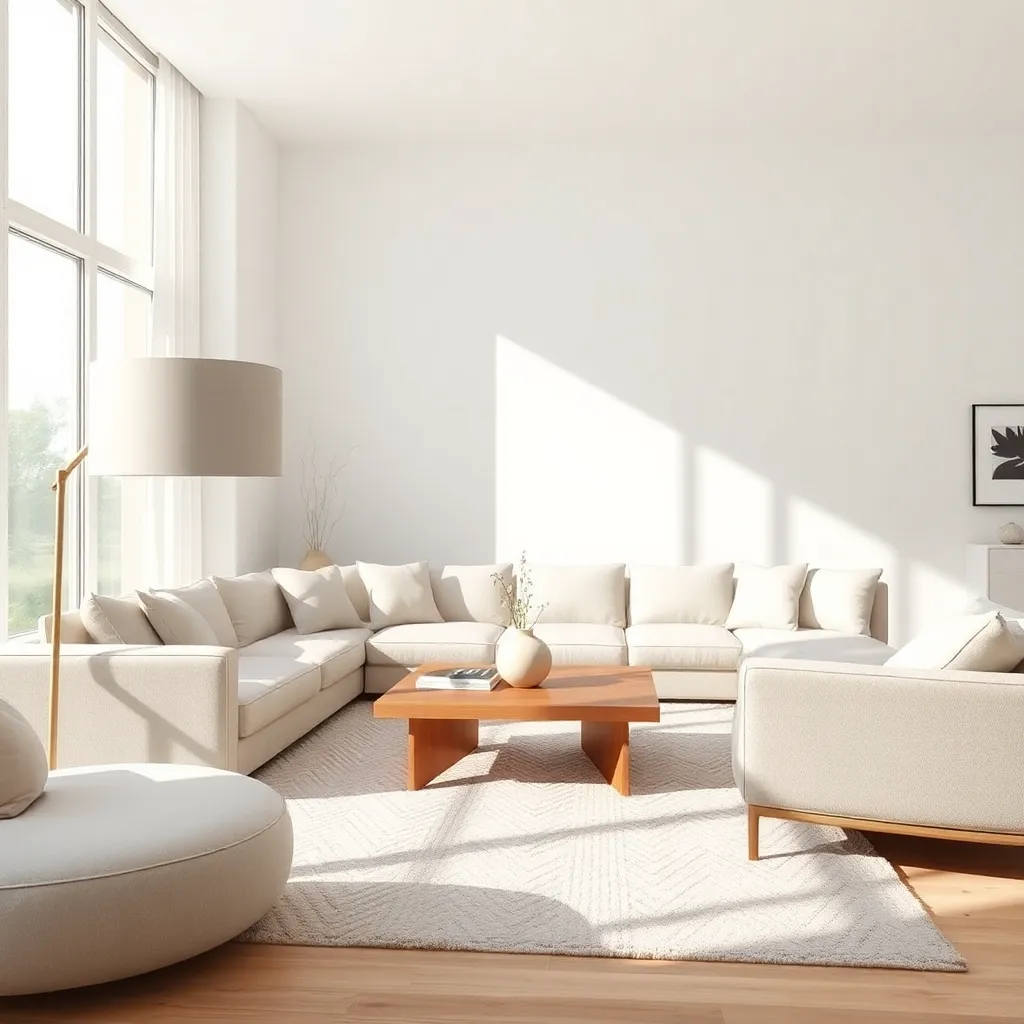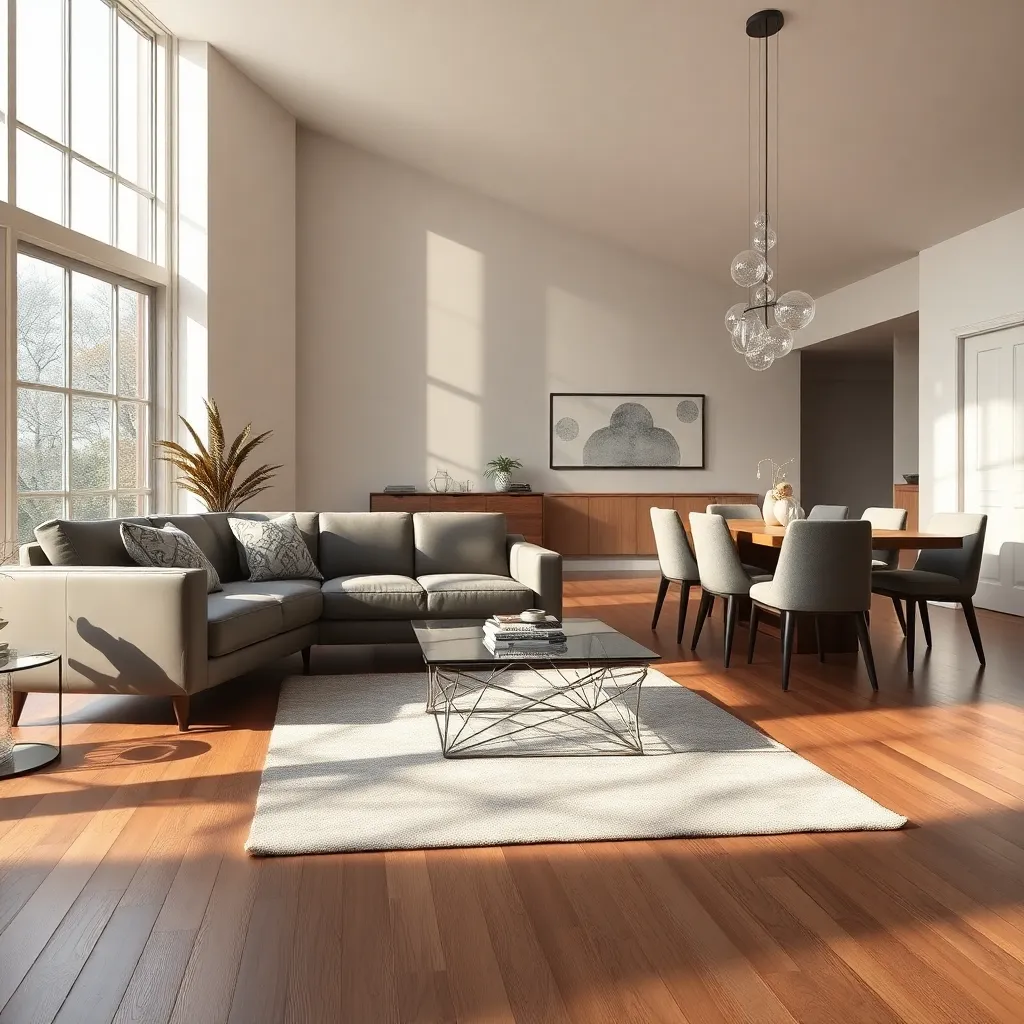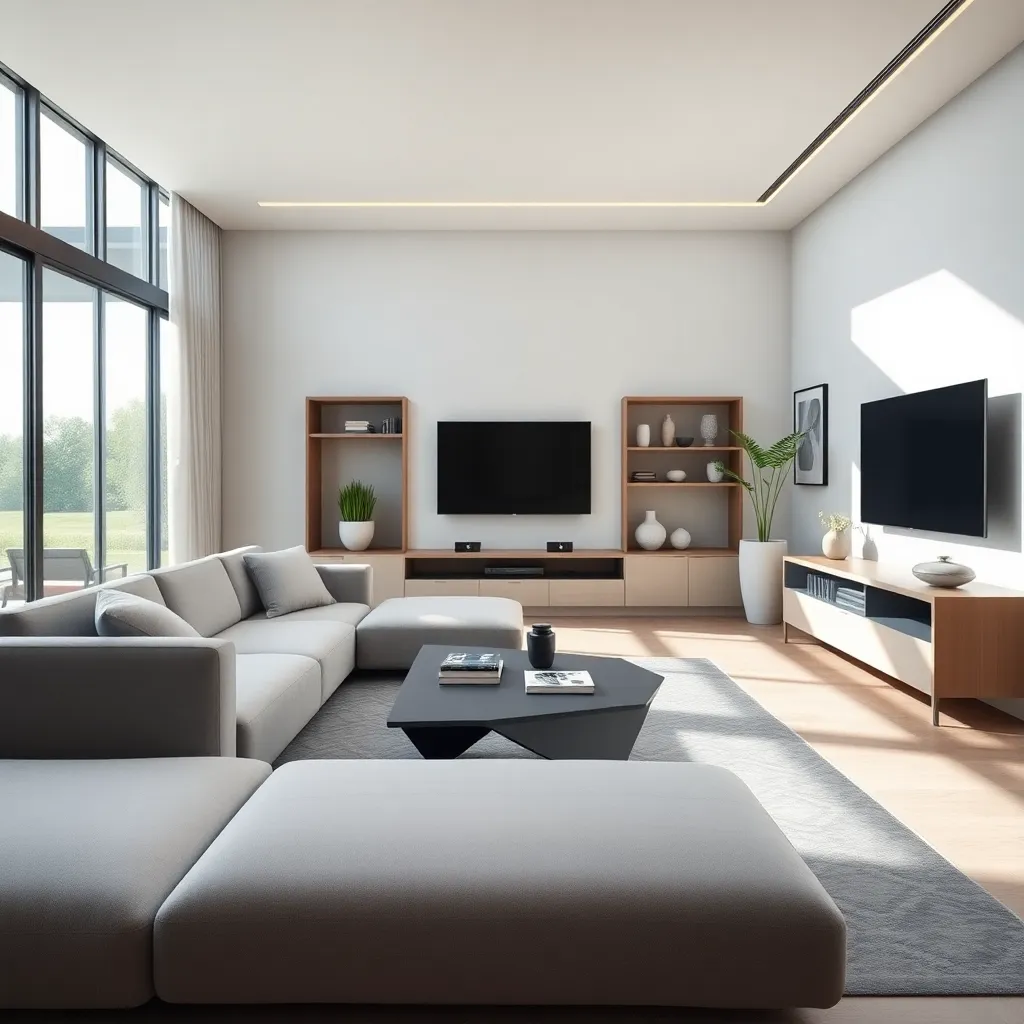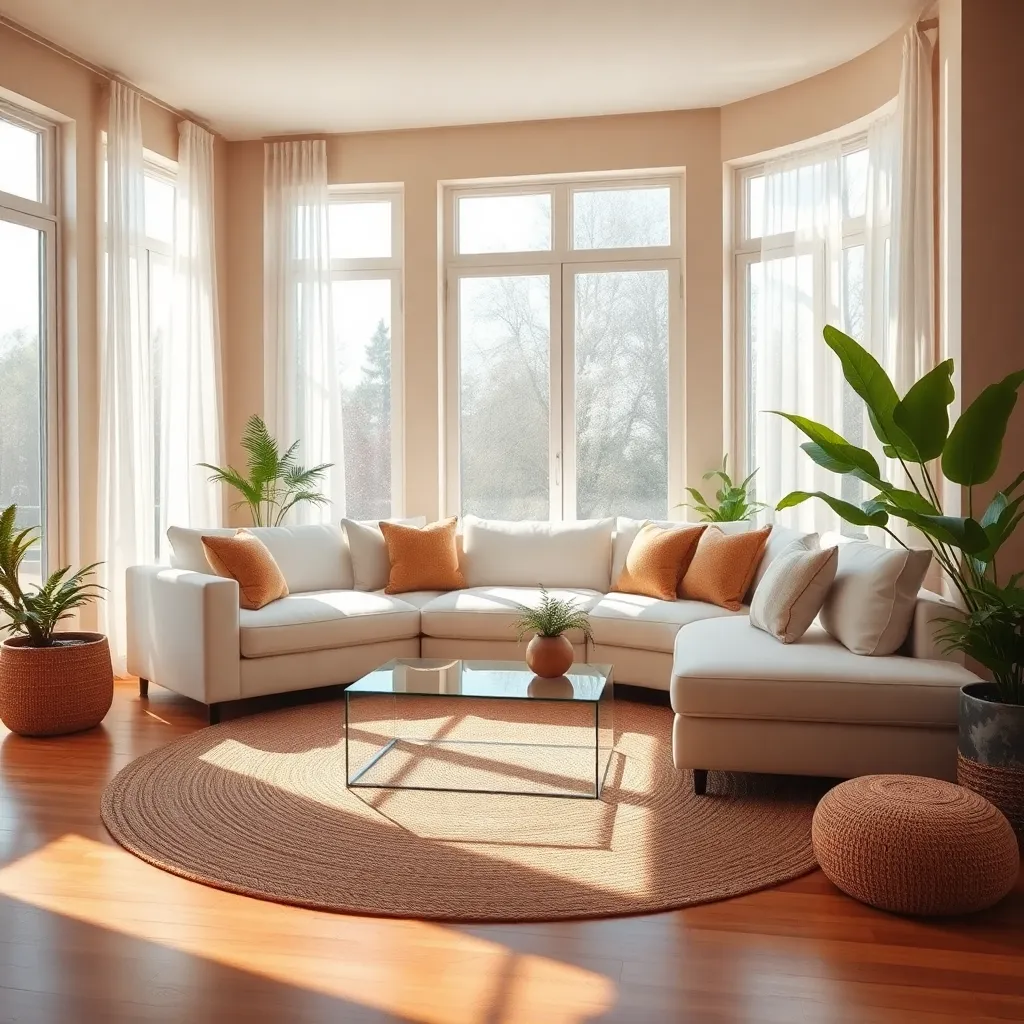Modern interior design is more than just a trend; it’s a lifestyle choice that resonates with both simplicity and sophistication. Whether you’re a novice eager to refresh your living space or a seasoned decorator looking to refine your style, the principles of modern design offer a versatile canvas for creativity. In this article, we’ll explore how to harness the beauty of modern design to create spaces that are not only visually stunning but also deeply personal and functional.
For beginners, modern design offers a user-friendly approach with its clean lines, neutral palettes, and emphasis on light and space. Experienced decorators will appreciate the opportunity to experiment with textures, innovative materials, and bold accents that modern design encourages. As we delve deeper, you’ll discover how to balance form and function, allowing each room to tell a unique story while maintaining a seamless flow throughout your home.
Engaging with modern interior design means embracing the power of thoughtful simplicity and purposeful aesthetics. From selecting the right furniture to mastering the art of minimalism, we’ll guide you through every step with practical advice and inspiring ideas. By the end of this journey, you’ll be equipped with the knowledge and confidence to transform your home into a modern masterpiece that reflects your personal taste and enhances your everyday living experience.
Understanding Modern Design Principles

Modern interior design emphasizes simplicity and function, blending aesthetics with practicality. One fundamental principle is the use of clean lines and uncluttered spaces, which can be achieved by selecting furniture with sleek, minimalist designs.
When choosing a color palette, consider neutral tones like whites, grays, and beiges as a base to create a calm and cohesive environment. For those looking to add a pop of color, opt for bold accents in the form of artwork or decorative pillows, ensuring they complement the overall theme rather than overpower it.
Furniture placement is crucial in modern design; focus on creating an open flow that allows movement and maximizes space. Position larger pieces, such as sofas or tables, towards the center of the room, leaving ample space around them to maintain an airy feel.
Consider integrating natural materials like wood and stone to add warmth and texture to your modern space. Incorporate them through flooring, countertops, or even small decorative items, ensuring they harmonize with other elements in the room.
Incorporating Minimalist Aesthetics

Minimalist aesthetics focus on simplicity and functionality, emphasizing the use of space rather than filling it with items. To start, choose furniture with clean lines and neutral colors, such as a sleek white sofa or a natural wood coffee table, to create a sense of openness and calm.
Incorporate natural materials like wood, stone, and linen to add warmth and texture without overpowering the space. Opt for a light, neutral color palette—shades of white, beige, and gray are excellent choices that provide a serene backdrop and allow room for subtle accents.
Begin with the basics by decluttering your space, removing any unnecessary items that disrupt the flow of the room. Storage solutions are essential; consider built-in shelving or furniture with hidden compartments to maintain a tidy, minimalist environment.
Lighting plays a crucial role in minimalist design, so use a combination of natural light and strategically placed fixtures. For a modern touch, consider pendant lights with simple designs and materials like metal or glass, which can act as both functional and aesthetic elements.
For more advanced decorators, consider the use of negative space as a design element, allowing breathing room between furniture and decor. This technique enhances the minimalist aesthetic by highlighting key pieces and creating a visual balance throughout the room.
Choosing Sleek Furniture Options

When selecting sleek furniture for a modern interior, focus on pieces with clean lines and minimal ornamentation. Opt for materials like metal, glass, and high-gloss finishes that reflect light and enhance the room’s spaciousness.
Consider a neutral color palette for your furniture to maintain the serene and uncluttered look typical of modern design. White, gray, and black are excellent choices, providing a versatile backdrop that allows for pops of color through accessories or artwork.
Placement is key in achieving a balanced look, so arrange furniture to promote easy movement and conversation. For instance, position a slim-legged sofa opposite a low-profile coffee table to create an open yet intimate seating area.
For advanced decorators, integrating multifunctional furniture can add sophistication and practicality. Choose items like a sleek console table that doubles as a workspace or a modular sofa that adapts to different seating arrangements, enhancing both the form and function of your space.
Integrating Technology Seamlessly

Incorporating technology into your home doesn’t mean sacrificing style. Begin by selecting **smart devices** that boast minimalist designs, ensuring they blend seamlessly with your modern interior.
Consider using **built-in charging stations** that keep cords hidden and maintain a clutter-free look. These stations can be integrated into furniture, such as nightstands or coffee tables, ensuring functionality without compromising aesthetics.
For a sophisticated touch, opt for **smart lighting systems** that allow you to adjust hues and brightness to complement your room’s color scheme. This not only enhances the ambiance but also provides flexibility for different moods and occasions.
Advanced decorators might explore **integrating voice-activated systems** with their existing decor. Position speakers and hubs discreetly on shelves or within cabinets, maintaining a clean and uninterrupted visual flow.
Finally, use **wireless charging pads** that double as decorative elements, such as sleek coasters or modern sculptures. This approach ensures your technology is both functional and a stylish addition to your space.
Enhancing Spaces with Natural Light

Natural light can dramatically transform a space, making it feel larger, more inviting, and vibrant. To maximize the light entering your home, use sheer curtains or blinds that can be easily adjusted to control the intensity of sunlight while maintaining privacy.
Consider the strategic placement of mirrors to reflect and amplify natural light throughout a room. Position mirrors opposite windows to effectively double the amount of sunlight, creating an illusion of depth and space.
For rooms with limited windows, opt for a light color palette to help bounce light around the space. Whites, soft pastels, and light grays are excellent choices for walls and ceilings, enhancing brightness and creating a serene atmosphere.
Furniture selection also plays a crucial role in optimizing natural light. Choose pieces with reflective surfaces, such as glass or metallic finishes, to further distribute light around the room. Additionally, keeping larger furniture away from windows will ensure light can flow freely into the space.
Conclusion: Growing Success with These Plants
In exploring the synergy between modern interior design and relationship dynamics, we’ve uncovered five key concepts that can transform both home and heart. First, the importance of creating shared spaces that foster connection and communication. Second, the role of personalization in making your environment a true reflection of your partnership. Third, the balance between aesthetics and functionality to support daily life. Fourth, the impact of color and lighting on mood and interaction. Lastly, the power of decluttering to create a peaceful and harmonious home.
As a next step, take a moment with your partner to assess your living space; choose one small change you can implement together to enhance your environment and relationship. Whether it’s rearranging furniture for better flow or adding a shared piece of decor, every effort counts.
Remember to save or bookmark this article for quick reference as you continue to nurture your relationship. By embracing these design principles, you’re not just creating a beautiful home but laying the foundation for a thriving partnership. Here’s to a future of love and unity, where every room in your home tells the unique story of your relationship.
